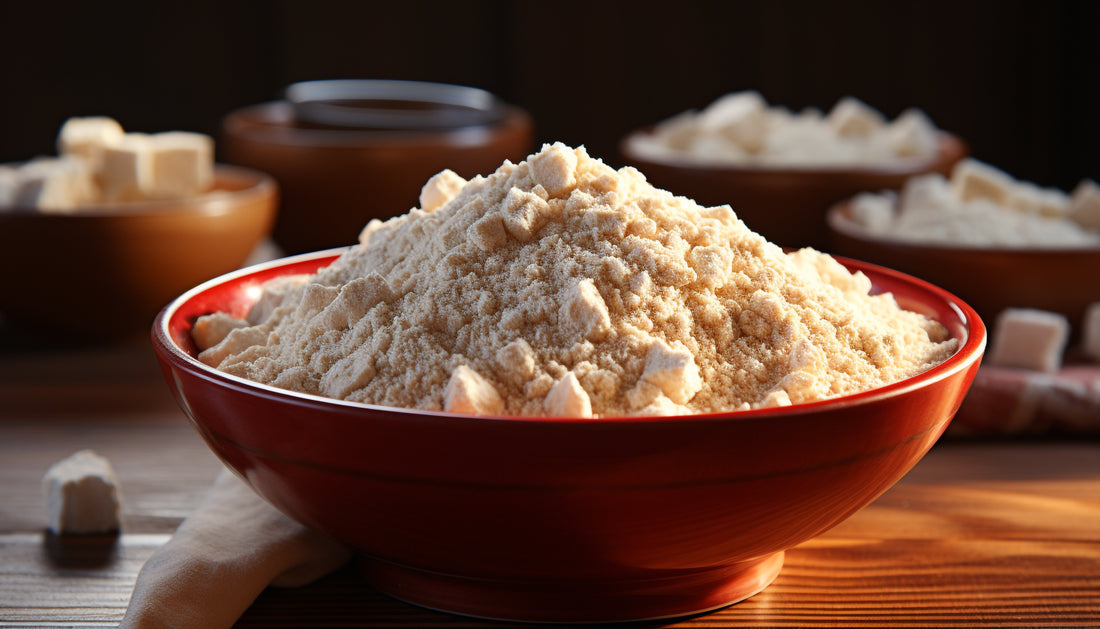Mandua Ka Atta vs. Wheat Flour – Which One is Better for Health?
Introduction
Flour is a staple in most Indian households, but have you ever wondered if you’re using the healthiest option? While wheat flour is widely used, Mandua Ka Atta (Ragi or Finger Millet Flour) is gaining popularity for its impressive health benefits. Packed with fiber, protein, and essential minerals, Mandua is a powerhouse of nutrition. But how does it compare to wheat flour? Let’s find out which one is better for your health and why you should consider making the switch!
1. Nutritional Comparison of Mandua & Wheat Flour
Both Mandua Ka Atta and wheat flour have their own benefits, but when we compare their nutritional value, Mandua stands out.
|
Nutrient |
Mandua Ka Atta (Ragi) |
Wheat Flour |
|
Fiber |
High |
Moderate |
|
Protein |
Good plant-based protein |
Moderate |
|
Calcium |
Very high (Good for bones) |
Low |
|
Iron |
Rich in iron |
Less than Mandua |
|
Gluten |
Gluten-free |
Contains gluten |
|
Glycemic Index |
Low (Good for diabetes) |
Higher (Can cause sugar spikes) |
As seen in the table, Mandua Ka Atta is higher in fiber, calcium, and iron, making it a better option for people looking for overall health benefits. Plus, it is gluten-free, which is a great choice for those with gluten sensitivity.
2. Why Mandua Ka Atta is a Better Choice for Weight Loss & Digestion
✔ Keeps You Full for Longer
Mandua Ka Atta is rich in dietary fiber, which keeps you full for a longer time. This means fewer cravings and a reduced chance of overeating, making it an excellent option for weight loss.
✔ Supports Better Digestion
The high fiber content in Mandua aids digestion by promoting a healthy gut. It helps prevent constipation and improves bowel movements. Wheat flour, on the other hand, has less fiber and may sometimes cause bloating.
✔ Lowers Blood Sugar Levels
Mandua has a low glycemic index, which means it releases sugar slowly into the bloodstream. This makes it ideal for diabetics and those trying to control their blood sugar levels.
✔ Helps Build Stronger Bones
Mandua is one of the best sources of calcium among grains. Regular consumption can strengthen bones, making it beneficial for growing children and older adults. Wheat flour, in comparison, has very little calcium.
✔ Boosts Immunity
Rich in antioxidants and essential minerals like zinc and iron, Mandua helps strengthen the immune system, keeping illnesses at bay.
3. How to Switch from Wheat Flour to Mandua Ka Atta
Switching to Mandua Ka Atta is easy and doesn’t require a drastic change in your diet. Here’s how you can do it step by step:
✅ Start with a Mix
If you’re used to wheat flour, begin by mixing 50% Mandua Ka Atta with 50% wheat flour. This helps your body adjust to the new taste and texture.
✅ Try Mandua Roti Instead of Wheat Roti
Make soft Mandua rotis by kneading the dough with warm water. Adding a little ghee while rolling them out makes them tastier and easier to cook.
✅ Explore New Recipes
Mandua Ka Atta isn’t just for rotis! Try making pancakes, dosa, porridge, or even cookies. This will help you enjoy the health benefits in different ways.
✅ Be Consistent
It might take a little time to adjust, but sticking to Mandua will bring long-term health benefits. The more you consume it, the more your body will thank you!
Conclusion
When it comes to choosing between Mandua Ka Atta and wheat flour, Mandua is the clear winner for overall health. It supports weight loss, boosts digestion, improves bone strength, and even helps control blood sugar. Making the switch is simple, and with so many delicious ways to include Mandua in your diet, there’s no reason not to try it! So, why not start today and give your body the nutrition it truly deserves?












